Book review: Spook: Science Tackles the Afterlife
by Mary Roach
★★★★
I loved this book for its entertainment value, but … Science Tackles the Afterlife? I mean, let’s get real, this is Mary Roach. Author of Stiff. You’re not getting convincing science for your money, you’re buying a colorful ride along the surface and around the edge. Mary touches on reincarnation, electromagnetic fields, where the soul resides physically in the body, mediums in lab studies, haunted houses, and near-death experiences.
Did you know the soul weighs three quarters of an ounce? In 1907 Duncan Macdougall measured how much a dead person’s body weight abruptly drops at the precise moment, it is assumed, that the soul leaves the body. But pursuing the study became difficult. Who would volunteer to die in Macdougall’s lab? Stymied by friction with officials, Macdougall resorted to weighing dogs on a scale he set up in his barn. Owing to the difficulty of finding dogs dying from a disease that rendered them exhausted and motionless, he immobilized and then killed them via injection. Unfortunately, not a single dog showed a drop in weight as it died. Macdougall’s conclusion: Dog’s don’t have souls.
The book’s finest quality is its ability to ride the fence, simultaneously teasing you with dubious but honest-to-God studies of the afterlife while bordering on tongue-in-cheek humor. Occasionally, Mary slips up, as in her explanation of the soul’s weight. “Theory one: Macdougall was a nutter.”
Oh, and the ghostly pictures … I loved them, too.
Can any study or anybody in this book be taken seriously? Oops, gotta go, it’s time for Ghost Hunters on the telly.

Book review: The Lost Gospel Q
by Marcus Borg
★★★★
From the introduction by Thomas Moore: “The haunting, inspiring and challenging words of Jesus have now been with us for two thousand years. During all that time they have been used to moralize, instruct, defend and condemn as well as to lead and guide. As scholars have pointed out for over a century, the four Gospels are riddled with the interpretations, biases and agendas of their editors. Amid the clutter of age-old conflicting readings, it often seems difficult to hear an original voice and to take to heart the wisdom of one of the world’s greatest teachers.”
If you’re unfamiliar with Q, here’s the idea: Matthew and Luke were written with the book of Mark open in front of them. 50% of Mark is repeated in Luke, and 90% is repeated in Matthew. But there are enough other commonalities between Matthew and Luke to determine that they shared another source, and this source appears to be a “sayings” Gospel. Just the words that Jesus taught. No such book has ever been found, so scholars have named this hypothetical book “Q,” meaning “Source.”
Written in the 50’s only a couple decades after Jesus’ death, presumably by his contemporaries, this is as close as we can get to Jesus’ original teachings, away from the supernaturalism and moralizing of later Gospels. Q is the sacred “soul” of the Gospel message. Most of its sayings are about how to live “the way” that Jesus taught. Q is the Gospel for Liberal Christians.
Once past the introductory sections, Borg’s book provides just one saying per page, sometimes with a bit of historical commentary. This is a short little book that you can read in a couple hours. Or, if you prefer reading one saying per day, the book would provide daily inspiration for three months.

Book review: Wide Awake Worship
by John Henson
★★★★
The subtitle of this book is Hymns and Prayers Renewed for the 21st Century. John Henson is a retired Baptist minister, now residing in Wales, and he put together this collection of what he calls “reset gems and polished buttons.” I asked him for a copy, hoping to keep my finger on the pulse of progressive Christian worship worldwide. Not knowing entirely what to expect, I found the collection to be a wonderful indicator of the direction Christianity is moving. I couldn’t help feeling uplifted and encouraged as I read.
Henson writes out of concern for the “many Christians who have told me they find it difficult to join in the traditional prayers and hymns of the churches with honesty since the words no longer accurately express their genuine beliefs and commitment. Yet at the same time is felt a sense of loss that is more than just nostalgia for the tools of devotion of former years.”
Well, that certainly struck a chord! The result is a compilation of worship prayers and hymns that (with a few welcome exceptions, such as a prayer for deeper love between even same-sex couples) will be appreciated by Christians of all denominations, from the most liberal to the most fundamental. It’s a welcome aid to worship for progressive believers and a step toward the dream of uniting Christians of all types.
Here is a favorite of mine, based on Psalm 1:
Making fun of others’ need.
That grow beside the river banks.
Sustaining life for everyone.
Unlike the lives of those they scorn.

The Complete Infidel’s Guide to the Koran
by Robert Spencer
★★★
I was disappointed in this book. Whether it’s true or not hardly seems to matter; I was still disappointed.
Spencer hopes to introduce casual readers to the words of the Koran, and he has nothing good to say about it. He compares it to Mein Kampf. Here are some of the chapter titles:
The Koran Teaches Nonviolence—Oh, and Violence, Too
Here’s the bottom line: If you want to know what’s in the Holy Book of Islam, read Spencer. If you want to know what Muslims believe, read Karen Armstrong. Islam is a religion of peace, which—like Christianity—attracts a few extremists. Like Christianity, its holy texts are in places downright abominable. Like Christians, practicing believers generally learn to ignore or spiritualize the ungodly portions of their scriptures.
Spencer says about his work, “You will find nothing in this book about Islamic ritual practices or prayers. This is an Infidel’s guide, focusing on where the Koran came from and its specific portions that are—or should be—of concern to Infidels.” It is, by Spencer’s admission, one-sided, and not reflective of general Muslim practices.
Tomorrow, I’ll balance this with a discussion of the Texts of Terror within the Bible, so we can realize how much Christians ignore in their holy book. It might help put things in perspective.

Book review: Woman of Sin
by Debra Diaz
★★★★★
A while back, I was needing a break from nonfiction, and decided to ask some publishers for fiction to review. I found Borg’s book, Helms’ book, Deeth’s book, Witherington’s book (not yet reviewed) … and this one, with the steamy title. Woman of Sin … (cough). Romance? Really?? That would be a first for me! I was assured it had a Christian theme, but I remained unconvinced, and resigned myself to hiding the book under the couch. Now, having read it, I understand the title and find it hilariously appropriate. Great stuff, Diaz!
The story takes place in the years just before and after the crucifixion of Jesus, so the setting is naturally appealing to me. I think it’s only fair to point out that the book does have a religious flavor. By book’s end, the characters undergo a conversion to Christianity. I hope you don’t take this as a spoiler; it needs to be said. This shift of focus will be off-putting to some, but will increase the reading enjoyment of others.
Precisely because of the religious nature of the book, it invites a more rigorous criticism, more than just “great read, well researched, buy it now.” It is a great book, and Diaz is a very good fiction writer. She has eloquently captured the life and politics of first-century Jerusalem and the Empire, and has spun a terrific story around one of the Bible’s most mysterious characters. But if Diaz had an evangelical purpose in writing, this may be the only five-star review she doesn’t appreciate; I found the most “fictional” part of her book to be the assumptions she makes about early Christianity.
By her own concession, Diaz had as a goal to be “historically and Biblically accurate.” But when the two clashed, she clearly preferred “Biblical.” If her research into all things non-religious weren’t so precise, her portrayal of the origins of Christianity wouldn’t stick out.
One example will suffice: Immediately after the resurrection, the characters repeatedly refer to Jesus as God. Kudos for Biblical accuracy: In John’s Gospel, Thomas, upon feeling the nail prints of the risen Jesus, exclaims, “My Lord and my God!” But in truth, it was likely many years afterward before Jesus would first be considered God, as evidenced by the evolving understanding of God that surfaces when we read the New Testament in chronological order. (John’s Gospel was written 60 years or more after Jesus died.) It would be less jarring in a historical novel for Diaz to reflect the very earliest Christian beliefs, rather than the religion that grew later in Jesus’ name. Laying a current-day version of Christianity atop an early first-century story made me feel the book was trying to convert me.
Religious content aside, it remains a very entertaining work of fiction. I absolutely loved it and wholeheartedly recommend it! From now on, only pseudo-romance novels will grace my book review blog! 

Book review: Putting Away Childish Things
by Marcus Borg
★★★★★
This is a story about believing, and Borg’s first-ever novel may be among his best books. The main character, Bible scholar and professor Kate Riley, is a progressive Christian with a devotion as strong as any fundamentalist believer.
For a glimpse of how Kate lives as a Christian, we might peek into one of her lectures. In a discussion of whether the story of Adam and Eve is “true,” Kate teaches, “The identification of truth with factuality is a cultural product of the Enlightenment. The success of the scientific method led many people to think of truth as what can be verified, and what can be verified came to be identified with facts. Within this framework, if something isn’t factual, then it’s not true.” Kate explains her point a bit later, with a quote from Thomas Mann: “A myth is a story about the way things never were, but always are.” She tells her students, “A myth is not about something that happened, that’s not its point. But it’s about the way things always are. And [Mann’s] definition also provides a way of distinguishing true myths from false myths—a false myth is a story that’s not about the way things are.”
Perhaps writing fiction allowed Borg to dig down inside himself to personal levels that were not possible in his nonfiction works. He lays bare what life and Christian practice is like for a liberal Christian. As I said earlier, this book is about believing, a word that more traditional Christians have a hard time associating with progressive Christians. How can one have faith in God while at the same time denying a literal interpretation of the Bible? How can such a Christian claim to believe? Is a progressive (liberal) Christian a real Christian or a mockery of true Christianity?
Here is what makes this book fascinating to me: The story will prove disappointingly bereft of a climax for anyone who doesn’t appreciate the tension of literal-versus-liberal Christianity. But for anyone trying to understand the progressive viewpoint, the climax is beautifully sculpted. Kate’s transition by book’s end into a “believer” is a perfect ending.

Book review: Jeremiah: The Last Days
by Buddy Helms
★★★★
Buddy Helms is a pastor of Bethel Baptist Church in Big Lake, Texas, where he happily taught the popular pre-tribulation belief until a church member asked him an innocent question that drove him deep into the scriptures. He came away with a different understanding of the end times. This book provides Buddy the opportunity to teach us what he learned, through a fictional character named Jeremiah, a businessman who was called by God to give it all up and preach an unpopular message.
Says Buddy at the story’s close, “If, as we claim, we are a people of the book, it is time that we returned to it.” I agree, but in the battle between believers of pre-tribulation and post-tribulation rapture, I don’t have a stake. In my own book about Revelation, I waffle on the subject, leaning slightly Buddy’s way. Nevertheless, the theology of his book and its clarity is as important to me as the storytelling, so my rating is influenced upward by the way Buddy made me dig into the Bible.
I do have a criticism: When the last days arrive in the book, it shifts into fast-forward. The story becomes condensed and pretty much just rolls through the events described in the Bible, literally and without much elaboration. Perhaps if Buddy doubled the length and developed the plot more dramatically, it could turn from a four-star into a five-star story. On the other hand, his approach is understandable; neither the rapture nor the tribulation is the focus of Buddy’s message. The chronology is. Buddy worries about the faith of complacent pre-trib believers who may someday find themselves experiencing opposition they never imagined.
I’ve wasted most of my space talking about the author (whom I find genuine and likeable), his motivation and theology. Sorry about that. I really did enjoy reading the fiction and could relate to the characters. The dialogue became a bit forced in places, but not overly so, and it didn’t really matter; I was easily swallowed up into the storyline. I think Pastor Helms has found an excellent way of communicating the Bible’s post-trib passages.

Book review: Revelation: The Way it Happened
by Lee Harmon
★★★★
I’m travelling today, on my way back from my son’s wedding in Texas! May life be good to you and your wonderful wife, Ken! Mary Catherine is a treasure.
Seems like a good time to take a break from writing, and reprint a review of my own book. This review was posted on Amazon by reviewer Lee Halstead, and I appreciated it because it appealed to me as an honest appraisal by the type of Christian I hoped to reach with my book. I’m gratified to be able to present a side of Revelation that many people may not have considered. Here is a link to Lee’s reviews.
Every Christian should read this book
As a new Christian 30 years ago, I was taught the evangelical Christian theological concept of “dispensationalism” and heard the usual interpretations of The Revelation and “end times” regarding the rapture, the tribulation and the second coming of Christ. I read Hal Lindsey’s The Late Great Planet Earth and was satisfied with his explanation as it never occurred to me that his explanation (or any others) was merely his interpretation and that he could be wrong. As I grew in age and as a Christian, after reading The Revelation several times, many things began to bother me about what I had been taught and learned about it and I began to question popular “end time” teachings. I have hoped and prayed for an explanation that made sense and was excited to find this book. Author Lee Harmon has written it from the point of view of a Jewish Christian named Samuel and his teenage son Matthew, who live during the time of and have received a copy of The Revelation from John, its author. Samuel and Matthew discuss The Revelation verse by verse with much Jewish and Roman history, culture and events woven in. A fascinating and thoughtful read, it presents a possible and common sense explanation of The Revelation. I also have read Steve Wohlberg’s “End Time Delusions”, and highly recommend it, more for it’s history of dispensationalism than anything, as I do not agree with a lot of Wohlberg’s explanations for The Revelation. But his thorough and exacting history of dispensationalism and how it came to be incorporated into modern Christian beliefs should not be missed by any Christian. I am still digesting the content of these books and coupled with the knowledge we simply cannot know the future, I have just decided not to take a firm position as to being a “futurist, historicist or preterist.” Instead, I am choosing to focus instead on living as a disciple of Christ in the present, as Christ said to.
(reprinted with permission)
More about this book can be found at http://www.thewayithappened.com

Book review: Jesus, An Historical Approximation
Jose A. Pagola
★★★★★
Who was the Jesus of history? A wandering sage? A penniless do-gooder? An apocalyptic preacher?
If you’re tired of all the one-dimensional labels and want to find the real Jesus, this is the right book. Pagola begins by affirming his devotion to the Catholic Church, and his analysis overemphasizes canonical scripture just as one would expect of a confessing Christian, but this is not a book about the “Christ of Faith.” While resorting to neither evangelism nor sensationalism, Pagola tells the simple story of a very human Jesus, his beliefs, dreams, ambitions, and values. I’m well-read on the topic of the historical Jesus, and I have to say, I am very impressed by the picture Pagola paints. This is about as down-to-earth as any exposition of the life of Jesus I’ve ever read. Any more down-to-earth would be dishonest, for Jesus truly was exceptional. The result may be the most inspiring book I’ve ever read about Jesus.
This is a Jesus who desperately wants his audience to embrace what he calls the reign of God, or the kingdom of God, and who gently teaches in parable and example how it can come about. It’s a historical Jesus that is, finally, believable and consistent with the picture provided in both scripture and history. It is a Jesus we can both love and admire. A Jesus whose teachings might actually explain the following that sprang up after his death. But still a very human Jesus, with real problems.
“Jesus put the honor of his family at risk when he left. His vagabond’s life, far from home, without fixed employment, performing exorcisms and strange healings, and proclaiming a disturbing message without authorization, brought shame to the whole family.”
Clearly, this book is not about Christianity. Not until the final pages of the book does Pagola discuss the religion which sprang up in Jesus’ name, or the apocalyptic expectations that arose through messianic dreams, and that short discussion of the post-resurrection Jesus may be the only place where I disagree much with Pagola’s research, finding it too simplistic. He gives the impression (perhaps not intentionally) that the meaning of Jesus’ life and resurrection were interpreted similarly by all early followers. Elsewhere, whenever Pagola’s view differs from my own, his view is the one leaning toward the consensus of other scholars, and I guess that’s a good thing. I’d put it like this: Pagola has carefully extracted the meat from contemporary Jesus scholarship and flavored it with common sense.

Book review: The Book of J
by Harold Bloom and David Rosenberg
★★★★★
Here’s another of my favorites, published back in 1990. If you haven’t read it yet, it’s a must read, for the sheer pleasure of it.
Most scholars now accept that the Torah was written by at least four different authors. The first strand of Genesis, Exodus and Numbers was written by an author that scholars call “J,” who lived in the tenth century BC. This is your chance to read J’s story as it was written, extracted and reassembled from the Bible. Bloom admires J on the level of Homer, Shakespeare, and Tolstoy, and wonders if J wasn’t a woman. J’s story abounds in unforgettable characters and subtle irony, including a God (Yahweh) whose personality is unmatched by any later writers.
In the first half of the book, the text of J is translated brilliantly by Rosenberg, who brings the scripture to life. Then, Bloom takes the reins and provides commentary in the second half. If you have never read any of Bloom’s writings, you’re in for a treat. Wry and fresh, Bloom is one of my favorite authors.
J, as Bloom points out multiple times, is no moralist. Sin is not one of J’s concepts, but contempt is. Irony is. J will stoop to puns and rise to heroism if it helps portray her characters. You’ll forget you’re reading the Bible as you get lost in the storytelling, I promise. I can’t think of enough good adjectives to describe this one.

Book review: Heaven is for Real
by Todd Burpo
★★★★★
Very cute. You’re going to love this adorable little heaven-traveler.
Colton was nearly four years old when a near-death experience awarded him a tour of heaven. The book is written by his father, a minister. In heaven, Colton met his great grandfather, a sister who died in the womb, and the angel Gabriel. His story is convincing and childlike. If Colton brought back any one special message from heaven, it would be that Jesus really, really loves little kids.
We do learn a little about what heaven is like. Everybody has wings and little lights over their heads. There are lots of colors there, lots of animals of every kind (including a lion!), and lots of swords. The swords are for the angels to keep Satan outside the pearly gates.
The first person to greet new arrivals into heaven is Jesus, and Jesus had plenty time to chat with Colton. Know why Jesus had to be crucified? Says Colton, “Jesus told me he died on the cross so we could go see his dad.”
There is one theme in the book that troubled me a bit. After Colton’s return from heaven, he would become very apprehensive at funerals, desperate to know if the fellow who died had “let Jesus into his heart.” Because, he knew, otherwise the man wouldn’t be going to heaven. The author’s comment? Man, those Sunday school teachers sure are doing a good job! That picture made me a little sad; a four-year-old boy hardly needs that kind of religion.
Many of the images described by Colton can be found in the book of Revelation. That’s a bit problematic in one sense. As a scholar of Revelation and first-century Jewish beliefs, I assure you that Revelation was never meant to describe “heaven.” Several passages in Revelation make it very clear that the Bible’s final book relates the Jewish expectation of a general bodily resurrection and a new earthly kingdom. Why, then, would I afford Burpo’s book five stars if it differs from my interpretation of scripture? Because Christianity is a growing religion! Colton’s experience is contemporary; it is indicative of today’s image of heaven, not yesterday’s. Today, we anticipate a different kind of reward. We now imagine the pearly gates welcoming us to heaven instead of to a new world power centered in a rebuilt Jerusalem. Colton’s heaven is warm and friendly, far better than Revelation ever imagined. I vote we let Colton rewrite the end of the Bible.

Book review: The Last Disciple
by Hank Hanegraaff and Sigmund Brouwer
★★★★
I’m unaware of another book out there that presents the preterist view in a fictional story, and that alone earns The Last Disciple recognition. If you need a reminder, preterism is a branch of Christianity that believes most of the prophecies and covenantal promises of the Bible have been fulfilled. Armageddon is over. Much, if not all, of Revelation has occurred.
The setting for the book is the years of Nero Caesar’s reign, just prior to the war of 70 AD, when the Romans overran Jerusalem. Nero, of course, is the Beast of Revelation, and a beastly fellow he is! The story is told primarily from the viewpoint of Vilas, a trusted advisor, who recognizes Nero is in the throes of madness. He meets up with John the Apostle, the author of Revelation, and together they flee the tentacles of the Beast. This is the first of a series, though I haven’t yet seen evidence of future books.
Fiction is not Hanegraaff’s bread and butter. I guess that’s where Brouwer comes in. For the record, I’ll say the fiction is moderately well-written and the plot engaging enough to hold my attention, but that hardly seems to matter to readers. Reviews are all over the map. It appears that if you’re a preterist, you’ll love this book. If you’re a futurist, you’ll hate it. If you’re undecided, you should probably save the fiction until you can enjoy it, and study the Biblical foundations of preterism first.

Book review: The Jefferson Bible: The Life and Morals of Jesus of Nazareth
by Thomas Jefferson
★★★
We must reduce our volume to the simple evangelists, select, even from them, the very words only of Jesus. There will be remaining the most sublime and benevolent code of morals which has ever been offered to man.
With this goal, Jefferson set about with razor in hand to extract the true words and actions of Jesus from the enveloping hype and miracle stories of the Gospels. Rejecting the virgin birth, the annunciation, and even the resurrection, Jefferson wanted to dig down to Jesus’ message of absolute love and service. The result is a chronological new Gospel formed by merging select portions of Matthew, Mark, Luke and John.
An excellent, concise introduction by Forrest Church and an afterward by Jaroslav Pelikan (Whose Bible Is It) round out the book. Jefferson espoused a Unitarian philosophy, subjugating the topic of religion in his library to the category of “moral philosophy.” Pelikan, in his afterward about Jefferson’s contemporaries, classifies Jefferson among the “Enlightenment rationalists.” After reading Jefferson’s Bible, I’d say that’s a fair assessment.

Book review: Letter to a Christian Nation
by Sam Harris
★★★
Nobody needs another review on this short little atheist booklet. Amazon now has 724 reviews. By now, we all know how aggressively Harris attacks Christianity, and how effectively his writing pushes buttons. I’m not going to review the book so much as I’m going to discuss the problem.
Does Harris have good points? Of course. Is he right? Quite often. Is he offensive? Duh. I’m about as “liberal” as a Christian can get, and even I am offended when Harris writes.
The funny thing is, Harris cares. He cares about people, he cares about truth, he cares about our future. If you don’t believe me, begin the book by turning to the back and reading the conclusion. But Harris’ method pretty much assures that the audience he wants to reach will continue to ignore him. Just as Harris continues to ignore the Christian writers who seek to reach him.
There’s a lot of truth flying in both directions in the Christian/atheist argument, and certainly a lot of honest intentions and concern for one another, yet very little connection. It makes me want to throw up my hands and conclude that atheists simply cannot grasp Christian thinking, and Christians simply cannot grasp atheist thinking. Atheists think they can use logic and common sense to somehow talk Christians away from what they feel and know through experience. Christians think if only atheists would give in to the God they are so frantically resisting, all would be well. If I thought you’d let me get away with it, I’d suggest that one side thinks with their head, the other with their heart … but, of course, I’d just be offending both sides with a trite oversimplification.
It seems utterly impossible to bring the two sides together. I’m not sure it’s possible for the two sides to even understand each other. But you’d think coexistence and mutual respect would at least be possible. To that end, I recommend Christians read Harris’ book to better understand the way atheists think, and just do their Christian best not to be offended.

Book review: Whose Bible Is It?
by Jaroslav Pelikan
★★★★★
It’s been maybe a year since I read this book, but I recently dug it out again for a bit of research. I was looking into the Comma Johanneum, that controversial little verse in the first epistle of John that got a facelift in the Middle Ages: 1 John 5:7-8.
In this book, Pelikan discusses how the Bible came to be, how it was interpreted, and how Christianity built its own message atop the Tanakh (the Torah, the prophets, and the Writings). But the Bible didn’t stop growing 2,000 years ago; it continues to be interpreted, modified, translated through the ages.
Did Christianity steal the Bible from the Jews? Pelikan has a way of uniting Christian and Jew even while recognizing an impenetrable rift. His writing is wonderfully readable and occasionally funny, as he points out how contradictory religions can read the same words and be inspired in different ways. He sees diversity as something to be appreciated, not condemned.
One cannot help but appreciate the Bible more as a living, growing, entity after reading this. The Word is alive! And ultimately, in the search for who owns the Bible, we must conclude as Pelikan does: To speak of possessing the Bible or even to ask “Whose Bible is it?” is … not only presumptuous but blasphemous.

Book review: The Gospel and the Greeks
by Ronald H. Nash
★★★★
Did the New Testament borrow from Pagan thought? Nash approaches the topic of outside influence in three parts, approaching the question of dependence from a traditional Christian viewpoint.
Part I: Hellenistic Philosophy. How much Hellenistic influence do we see in the Gospels? From Paul’s quoting of Stoic philosophers to John’s interpretation of the Logos, there are unquestionable connections. The most fascinating passage in this section is Nash’s “test case” in the book of Hebrews. There, Jesus is promoted as superior to the Alexandrian Logos and Sophia, superior to priestly mediators, superior to Moses and Melchizedek. Jesus is the true Logos, the fulfillment of it all. Where Hellenistic thinking often formed cyclical patterns, Hebrews portrays Jesus as breaking the pattern. The author of Hebrews perceives time not as cyclical, but as linear. “The once-for-all, fully completed, never-to-be-repeated, and final character of Jesus’ sacrifice contrasts sharply with the continuing sacrifices of the Levitical priests.”
Part II: The mystery religions. Each region of the Mediterranean world seems to have produced its own mystery religion. How much influence did these religions have on Christianity? Nash sees it as a dead issue, in part because we know so little about the mystery religions before the third century. It was in this century that Christianity began to blend with mystery religions such as Mithraism, and the next century before the terminology of the mystery cults first began to appear in the language of the church. On the other hand, other cult practices such as that of Dionysus are too early to have an influence. Those who compare communion with pagan ritual are not taking timing into consideration: the savage practice of eating one’s god appears to have long since disappeared before the time of Jesus.
Part III: Gnosticism. The idea that any of the canonical books reflects Gnostic influence is losing favor. Renowned theologian Rudolf Bultmann believed the writer of the Gospel of John had been a member of a Gnostic sect who was converted to Christianity, but Nash examines various Gnostic writings and concludes that Gnostic thinking postdates the Biblical writings.
Personally, I find it hard to believe that any Mediterranean religion grew up in a vacuum, yet a rash of recent books tend to sensationalize the commonalities between Christian and Pagan practices. Tom Harpur’s The Pagan Christ provides one example. Nash’s book provides some needed counter-balance.
(Note: Nash’s research is not a response to recent writings, but a precursor; I’m reviewing the 2003 second edition of a 1992 original.)

Book review: The Spiral Staircase
by Karen Armstrong
★★★★★
This is a new sequel to Karen’s first book, Through the Narrow Gate, after the first sequel, Beginning the World, flopped. Because, she says, she was “not truthful.”
Perhaps Karen overcompensated on the “truthful” part this time around. The result is a brutally honest autobiography of a repeat failure. At one point, Karen despairs, “I was an ex-nun, a failed academic, mentally unstable, and now I could add epileptic to this dismal list. … Even God, for whom I had searched so long, is simply the product of a faulty brain, a neurological aberration.”
Karen spent seven years as a nun in a Catholic convent, then tried to put God behind her and enter the secular world of London. Yet, God would never quite go away. God hung around in a love-hate relationship until Karen finally faced her demons, and found religion again … this time in writing about God. Faith, Karen learned, is not an intellectual assent but an act of will, a deliberate choice to believe. Believers (among whom Karen confesses multiple times she is no longer) cannot prove or disprove their doctrines, but must consciously decide to take them on trust.
One of Karen’s shortcomings as a nun was that she could never connect with God through prayer. There was simply nobody on the other end. Many years later, she realized she was looking for God where he could not be found. Faith, she came to understand, is not about belief, but about practice. Religion, says Karen, is a “moral aesthetic,” an “ethical alchemy.” If you behave a certain way, you will be transformed. The myths and laws of religion are not true because they conform to some metaphysical, scientific, or historical reality but because they are life enhancing. You will not discover them to be true until you put them into practice in your own life, where they compel you to act in such a way as to bring out your own heroic potential. Faith, Karen now believes, should make you more human, not less.
On the very last page, Karen looks down to find that, while she has climbed out of darkness, she has come full circle. The Spiral Staircase. “As I go up, step by step, I am turning, again, round and round, apparently covering little ground, but climbing upward, I hope, toward the light.”

Book review: Refracted
by Sheila Deeth
★★★★★
What a fun read! I smiled the whole time … about an hour. Yeah, pretty short, but memories of the story will linger much longer. If you find yourself describing the book to someone, adjectives will spill forth like the colors of the rainbow. My suspicion, however, is that each reader’s experience will be different … your adjectives will not match mine.
Delightful. Colorful. Fanciful. Meaningful. It’s a very “full” 53 pages. Half the book is a dreamlike romp through familiar Biblical territory, and at its midpoint I felt momentary disillusionment to uncover the machinery that made the magic within the book “real,” but I was just as quickly swallowed up again into its emerging sci-fi plot line.
I dare say no more, because the beauty of the book is in its unfolding wonder, and further hints will dampen your reading experience. Yes, it’s religious, on several levels really, but the setting (which eventually tends more toward New Age than Judeo-Christian) adds flavor … and leaves you thinking about the role of religion in our lives.
(available in electronic form only)

Book review: Peter, Paul & Mary Magdalene
by Bart D. Ehrman
★★★★★
This may be my favorite among Ehrman books. It details the legends of three of the most important followers of Jesus in the Bible.
Few of the stories told are considered historical; even stories that derive from the Bible are not considered literally true by Ehrman. For example, many of our stories come from the book of Acts, and about a quarter of Acts is made up of speeches by its characters, mostly Peter and Paul. But the speeches all sound about the same; Peter sounds like Paul and Paul sounds like Peter. This may seem a bit odd, given the fact that Peter was an illiterate peasant who spoke Aramaic, whereas Paul was a well-educated, highly astute author raised in a Greek-speaking environment. Ehrman handles these situations with characteristic bluntness: “When we examine what Peter is alleged to have preached, we are in effect seeing what different authors imagined him to have said—which may come down to the same thing as seeing what authors would have wanted him to say.”
Nevertheless, even knowing that nearly all we have about these characters is legend, the legends are fascinating and the book is fun to read. Ehrman takes a shot at unraveling which epistles are written by these three (a few of the Pauline epistles is all) and he dives into a number of second-century non-canonical Christian writings, presenting his findings in three parts: One part for each character. The section on Peter is absolutely fascinating; the section on Paul is argumentative, and not so original (Ehrman’s usual chip on the shoulder regarding pseudonymous writing makes an appearance); and the section on Mary will leave you bewildered, definitely thinking differently about her and the role of women in early Christianity. Ehrman puts it like this:
“The Christian religion is founded on the belief that Jesus was raised from the dead. And it appears virtually certain that it was Mary Magdalene of all people, an otherwise unknown Galilean Jewish woman of means, who first propounded this belief. It is not at all far fetched to claim that Mary was the founder of Christianity.”

Book review: Noah’s Flood
by William Ryan & Walter Pitman
★★★★
“We need not try to make history out of legend, but we ought to assume that beneath much that is artificial or incredible there lurks something of fact.” –C. Leonard Wooley, 1934
With this quote, the authors set the tone for the story of their exploration of the Black Sea basin. 7,500 years ago, their research determined, rising sea levels on the Mediterranean broke through a barricade and plunged into the Black Sea with a force 400 times greater than that of Niagara Falls, its thundering sound carrying at least 60 miles. Could this event have spawned the flood legends we read of in so many cultures, including the Hebrew story of Noah and the Ark? “The details given in the inscriptions describing the Flood leave no doubt that both the Bible and the Babylonian story describe the same event, and the Flood becomes the starting point for the modern world in both histories.” Could it be that people driven from their villages spread advances in agriculture and irrigation throughout Mesopotamia?
Because of the impact these flood stories have had on various cultures for so long, this is a fascinating topic for me. For the most part, the research of Ryan and Pitman has been well-received, and the general theory (if not all the details) deserves to be treated seriously. More recent research validates that a sudden flood event may indeed have occurred as suggested, though perhaps not at the magnitude described in Ryan and Pitman’s hypothesis.
The writing is interesting, and it reads like a scientific detective story. This isn’t a new book; it’s now thirteen years old, and you can pick it up used at Amazon for pennies.


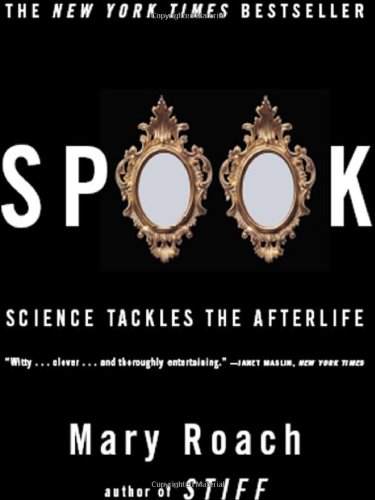


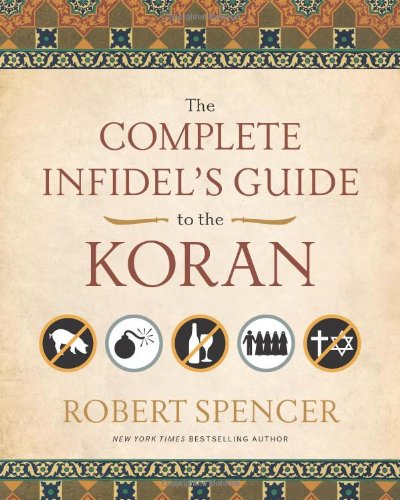

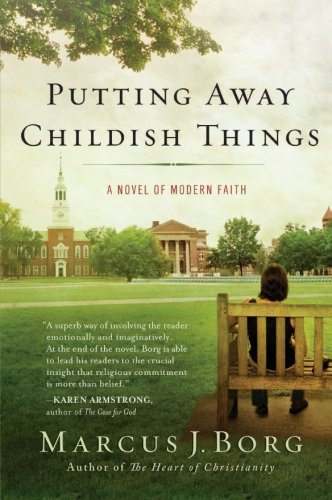
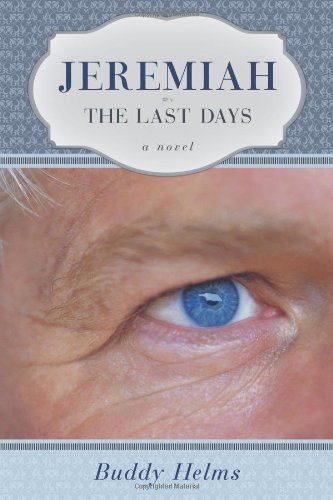
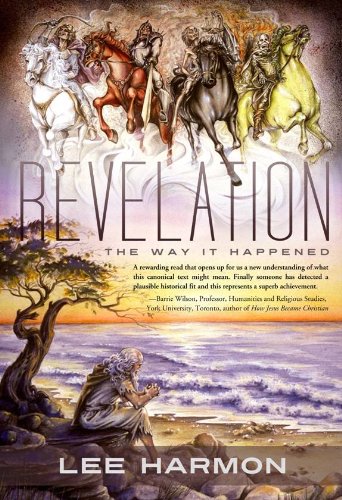
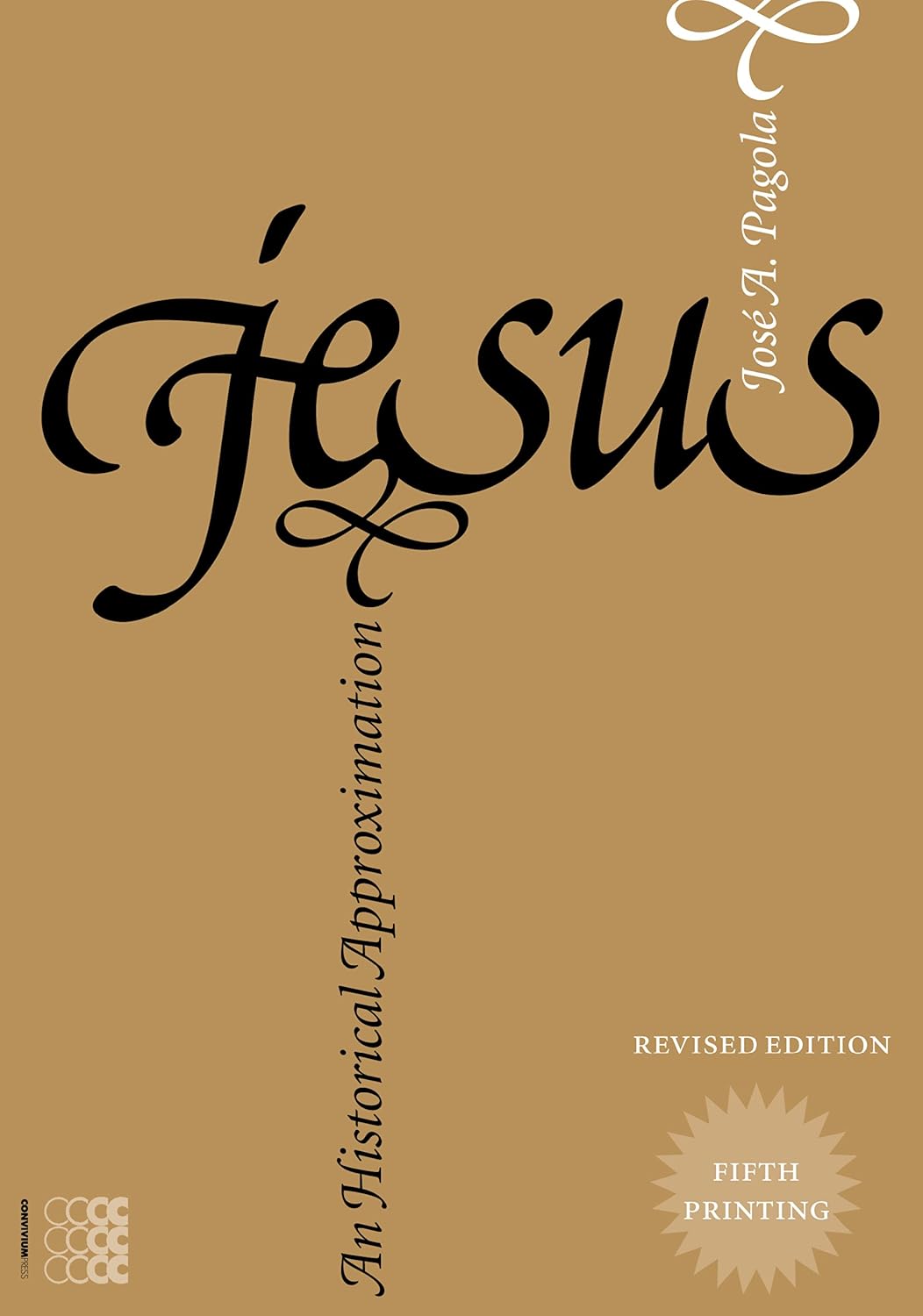
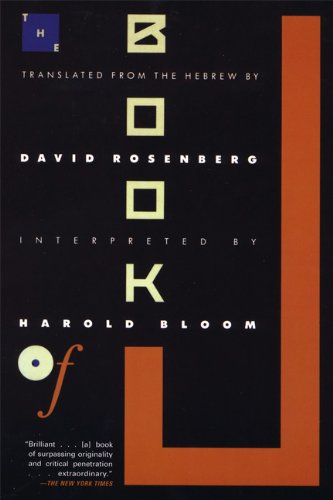

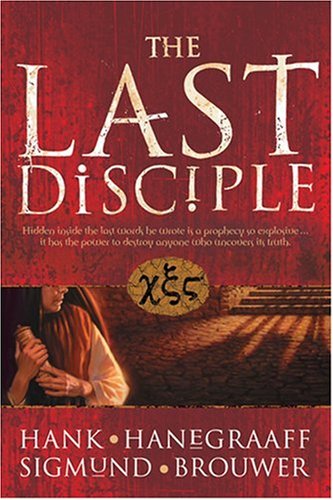
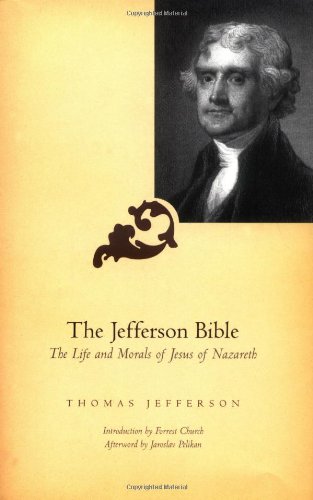
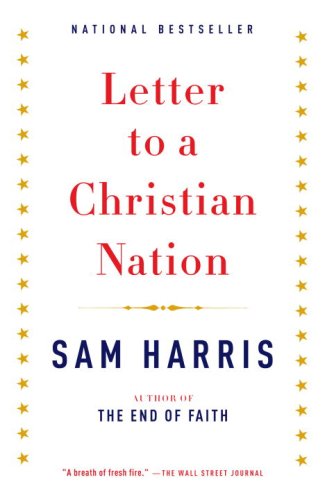
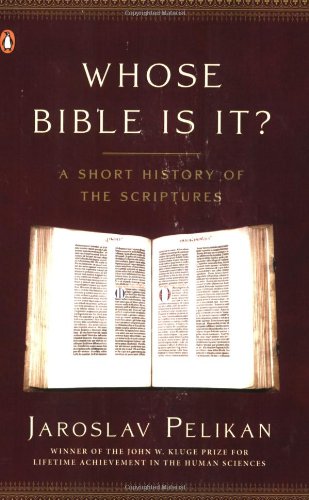
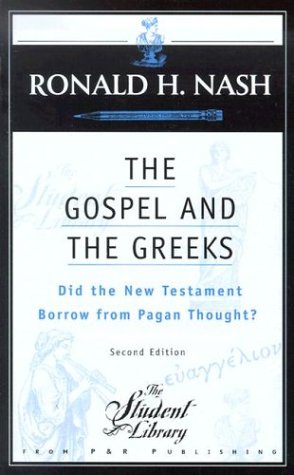

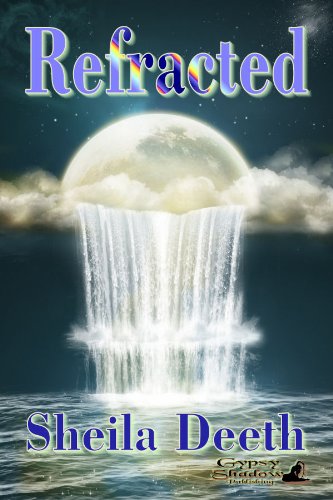

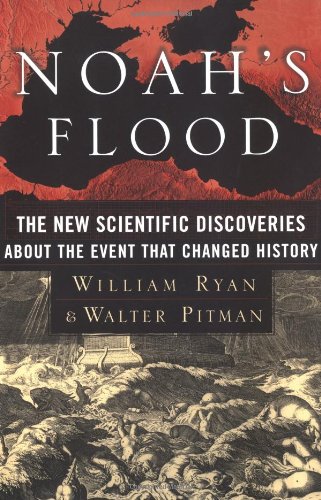









 354 Circles
354 Circles
 603 Goodreads Friends & Fans
603 Goodreads Friends & Fans

 Hello! I'm an author, historical Jesus scholar, book reviewer, and liberal Christian, which means I appreciate and attempt to exercise the humanitarian teachings of Jesus without getting hung up on any particular supernatural or religious beliefs.
The Bible is a magnificent book that has inspired and spiritually fed generations for thousands of years, and each new century seems to bring a deeper understanding of life’s purpose. This is true of not only Christianity; through the years, our age-old religions are slowly transforming from superstitious rituals into humanitarian philosophies. In short, we are growing up, and I am thrilled to be riding the wave.
I avidly read all thought-provoking religion titles. New authors: I'd love to read and review your book!
Hello! I'm an author, historical Jesus scholar, book reviewer, and liberal Christian, which means I appreciate and attempt to exercise the humanitarian teachings of Jesus without getting hung up on any particular supernatural or religious beliefs.
The Bible is a magnificent book that has inspired and spiritually fed generations for thousands of years, and each new century seems to bring a deeper understanding of life’s purpose. This is true of not only Christianity; through the years, our age-old religions are slowly transforming from superstitious rituals into humanitarian philosophies. In short, we are growing up, and I am thrilled to be riding the wave.
I avidly read all thought-provoking religion titles. New authors: I'd love to read and review your book!
 Hi! While Lee writes the articles and reviews the books, I edit, organize, and maintain the blog. The views expressed here are Lee's but I'm his biggest supporter! :-)
Hi! While Lee writes the articles and reviews the books, I edit, organize, and maintain the blog. The views expressed here are Lee's but I'm his biggest supporter! :-)
Connect With Me!